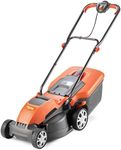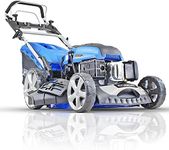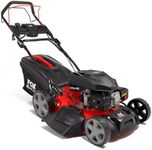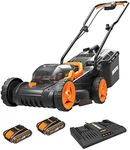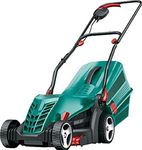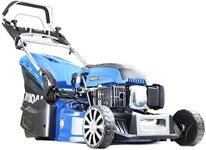Buying Guide for the Best Electric Start Lawn Mowers
Choosing the right electric-start lawn mower can make your lawn care routine much more efficient and enjoyable. Electric-start mowers are convenient because they eliminate the need for manual pulling to start the engine, making them a great choice for those who prefer ease of use. When selecting a lawn mower, consider the size of your lawn, the type of terrain, and your personal preferences for features and comfort. Understanding the key specifications will help you make an informed decision that best suits your needs.Engine PowerEngine power in lawn mowers is measured in horsepower (HP) or cubic centimeters (cc). This spec is important because it determines how well the mower can handle thick or tall grass. For small to medium-sized lawns with regular grass, a lower power engine (around 140-160cc) is sufficient. For larger lawns or tougher grass, you might need a more powerful engine (above 160cc). Consider the size and condition of your lawn to decide the right engine power for you.
Cutting WidthThe cutting width refers to the width of the mower's blade and determines how much grass is cut in a single pass. A wider cutting width (20 inches or more) is ideal for larger lawns as it reduces the number of passes needed, saving time. For smaller lawns or areas with many obstacles, a narrower cutting width (16-18 inches) might be more maneuverable and efficient. Choose a cutting width that matches the size and layout of your lawn.
Battery LifeFor electric-start mowers, battery life is crucial as it affects how long you can mow without needing a recharge. This is especially important for cordless models. Battery life is usually measured in amp-hours (Ah). A higher Ah rating means longer run time. For small lawns, a battery with 2-4 Ah might be sufficient, while larger lawns may require 5 Ah or more. Consider how long it typically takes to mow your lawn to determine the necessary battery life.
Deck MaterialThe deck material of a lawn mower affects its durability and weight. Common materials include steel, aluminum, and plastic. Steel decks are durable and suitable for tough conditions but can be heavy. Aluminum decks are rust-resistant and lighter, making them easier to maneuver. Plastic decks are the lightest and resistant to rust but may not be as durable. Choose a deck material based on your need for durability versus ease of handling.
Height AdjustmentHeight adjustment allows you to change the cutting height of the mower to suit different grass types and conditions. This feature is important for maintaining a healthy lawn. Mowers typically offer several height settings, ranging from 1 to 4 inches. If you have a variety of grass types or want to change the cutting height throughout the season, look for a mower with easy and multiple height adjustment options. Consider how often you might need to adjust the height when choosing this feature.
Self-Propelled vs. PushSelf-propelled mowers have a drive system that moves the mower forward, reducing the effort needed to mow, especially on slopes or large lawns. Push mowers require manual effort to move. If you have a large or hilly lawn, a self-propelled mower can make the task much easier. For smaller, flat lawns, a push mower might be sufficient and more economical. Consider the terrain and size of your lawn to decide which type is best for you.
